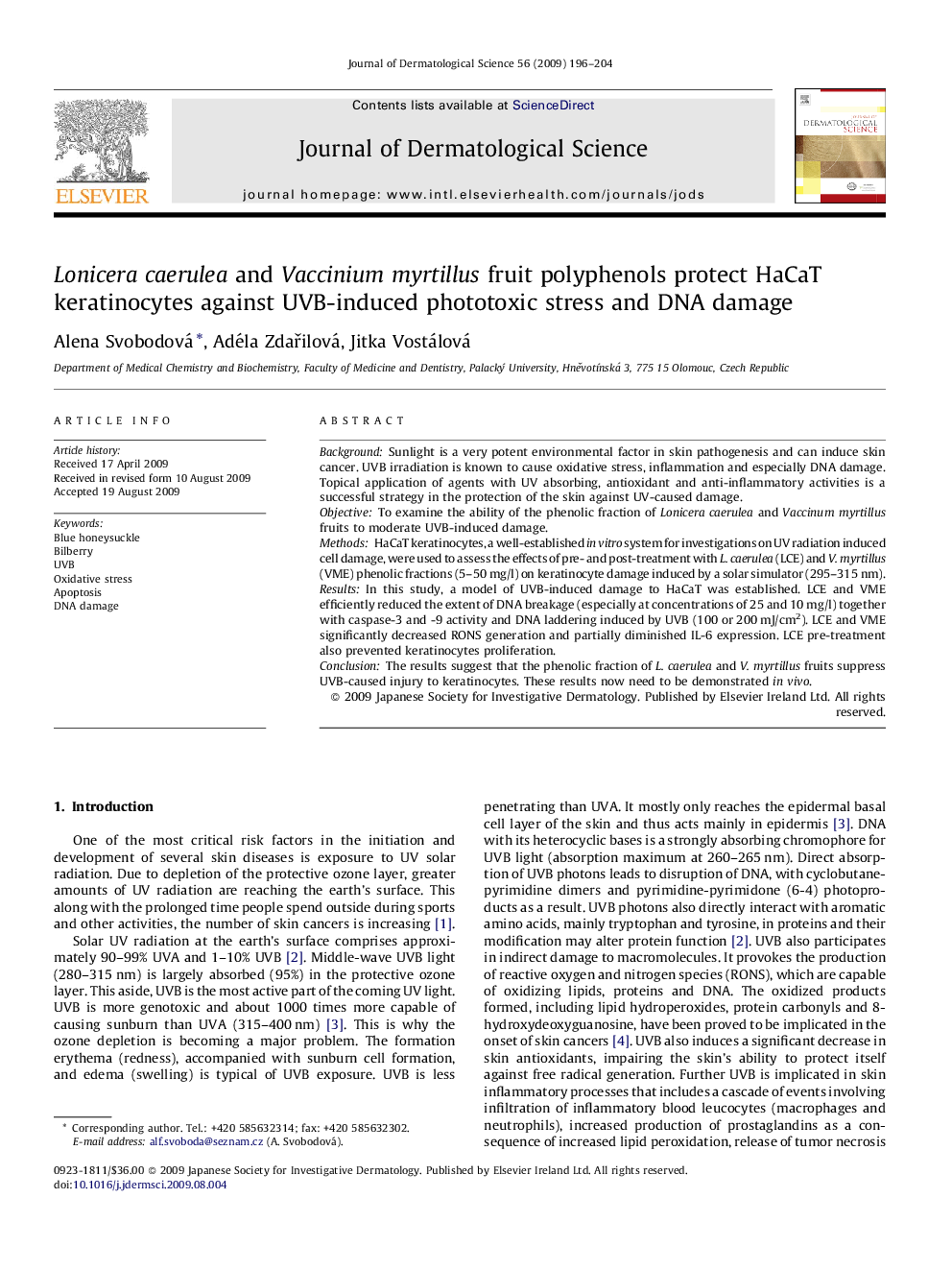| Article ID | Journal | Published Year | Pages | File Type |
|---|---|---|---|---|
| 3213888 | Journal of Dermatological Science | 2009 | 9 Pages |
BackgroundSunlight is a very potent environmental factor in skin pathogenesis and can induce skin cancer. UVB irradiation is known to cause oxidative stress, inflammation and especially DNA damage. Topical application of agents with UV absorbing, antioxidant and anti-inflammatory activities is a successful strategy in the protection of the skin against UV-caused damage.ObjectiveTo examine the ability of the phenolic fraction of Lonicera caerulea and Vaccinum myrtillus fruits to moderate UVB-induced damage.MethodsHaCaT keratinocytes, a well-established in vitro system for investigations on UV radiation induced cell damage, were used to assess the effects of pre- and post-treatment with L. caerulea (LCE) and V. myrtillus (VME) phenolic fractions (5–50 mg/l) on keratinocyte damage induced by a solar simulator (295–315 nm).ResultsIn this study, a model of UVB-induced damage to HaCaT was established. LCE and VME efficiently reduced the extent of DNA breakage (especially at concentrations of 25 and 10 mg/l) together with caspase-3 and -9 activity and DNA laddering induced by UVB (100 or 200 mJ/cm2). LCE and VME significantly decreased RONS generation and partially diminished IL-6 expression. LCE pre-treatment also prevented keratinocytes proliferation.ConclusionThe results suggest that the phenolic fraction of L. caerulea and V. myrtillus fruits suppress UVB-caused injury to keratinocytes. These results now need to be demonstrated in vivo.
